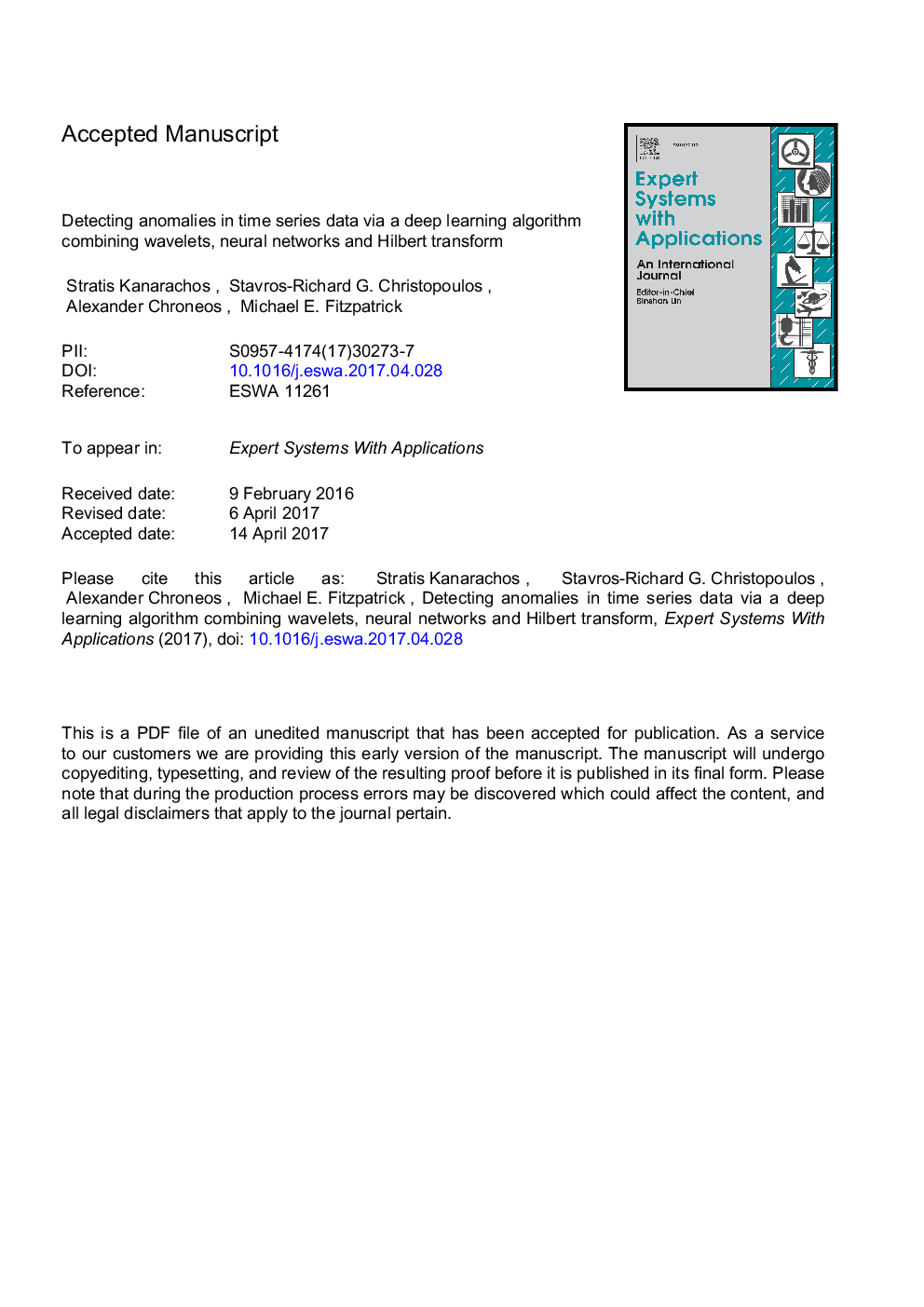| Article ID | Journal | Published Year | Pages | File Type |
|---|---|---|---|---|
| 4943157 | Expert Systems with Applications | 2017 | 61 Pages |
Abstract
The quest for more efficient real-time detection of anomalies in time series data is critically important in numerous applications and systems ranging from intelligent transportation, structural health monitoring, heart disease, and earthquake prediction. Although the range of application is wide, anomaly detection algorithms are usually domain specific and build on experts' knowledge. Here a new signal processing algorithm - inspired by the deep learning paradigm - is presented that combines wavelets, neural networks, and Hilbert transform. The algorithm performs robustly and is transferable. The proposed neural network structure facilitates learning short and long-term pattern interdependencies; a task usually hard to accomplish using standard neural network training algorithms. The paper provides guidelines for selecting the neural network's buffer size, training algorithm, and anomaly detection features. The algorithm learns the system's normal behavior and does not require the existence of anomalous data for assessing its statistical significance. This is an essential attribute in applications that require customization. Anomalies are detected by analysing hierarchically the instantaneous frequency and amplitude of the residual signal using probabilistic Receiver Operating Characteristics. The method is shown to be able to automatically detect anomalies in the Seismic Electrical Signal that could be used to predict earthquake activity. Furthermore, the method can be used in combination with crowdsourcing of smartphone data to locate road defects such as potholes and bumps for intervention and repair.
Keywords
ADFVehicle-to-vehicleMicro electro-mechanical systemsV2VDNNDDMROCV2IτmΔVMETERFPRMEMSAUCSESProbabilityScaling functionAnomaly detectionErrorAmplitudeSecondTPRDeep neural networkNeural networksInstantaneous phasetrue positivefalse positiveThreshold valuearea under curvefalse negativetrue negativeWaveletFalse positive rateTrue positive ratereceiver operating characteristicsLocation parameterDeep learning
Related Topics
Physical Sciences and Engineering
Computer Science
Artificial Intelligence
Authors
Stratis Kanarachos, Stavros-Richard G. Christopoulos, Alexander Chroneos, Michael E. Fitzpatrick,
